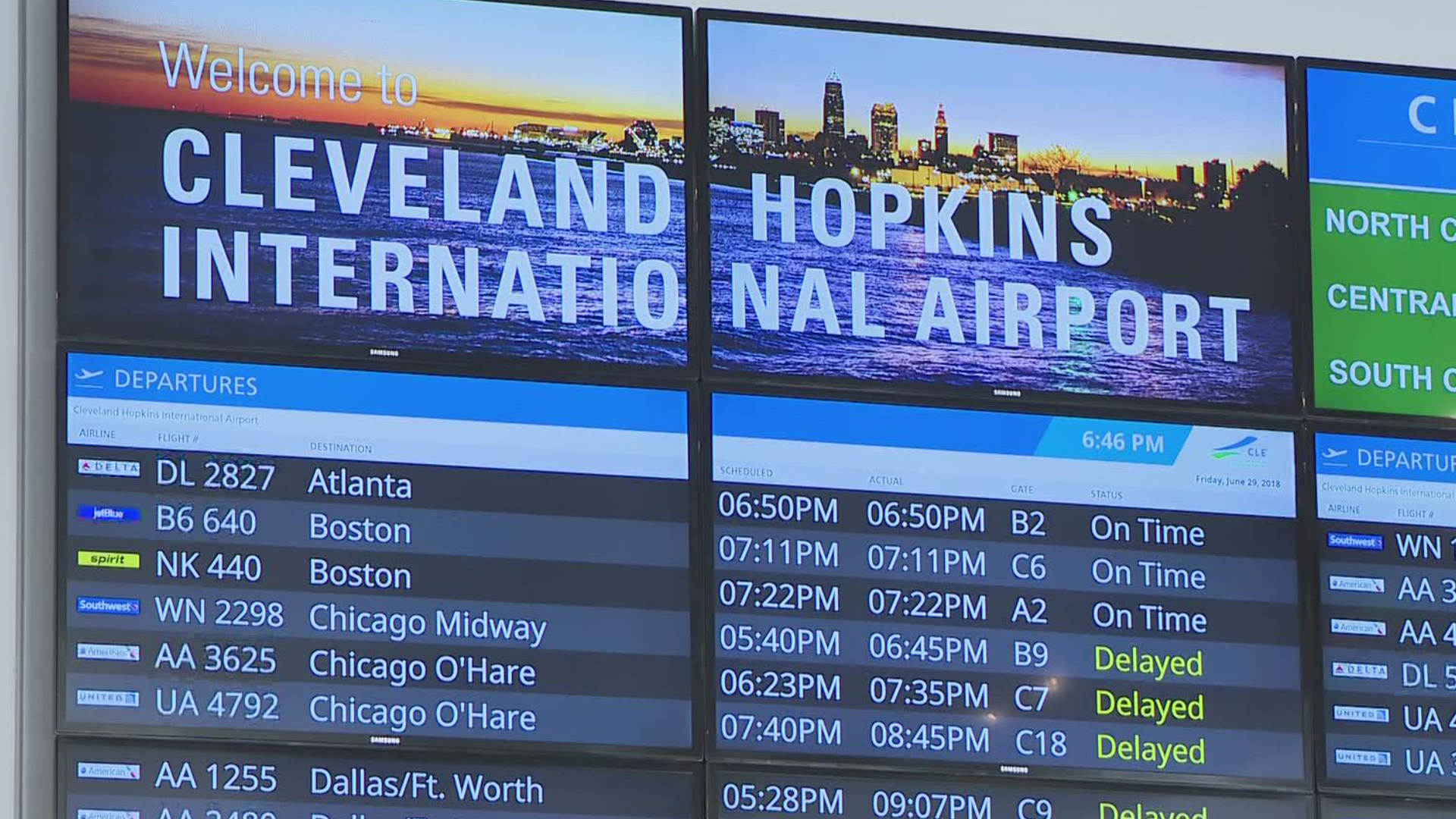CLEVELAND — Editor's Note: The above video is from a previously published story
Cleveland Hopkins International Airport (CLE) has completed a four-phase, six-year program with the Federal Aviation Administration (FAA) to improve airfield safety for aircraft on the runways and taxiways of CLE.
“The areas improved were identified by the FAA’s Runway Safety Action Team (RSAT),” said CLE Airport Director Robert Kennedy in a statement. “We are grateful for our partnership with the FAA to complete these projects to make the airport safer for pilots to navigate.”
Phase 1 kicked off in November of 2015 with the $7 million design and construction administration project for reconstructing the North Airfield taxiways between Runway 6L-24R, Taxiway Sierra, Taxiway Kilo and Taxiway Juliet. This work changed the geometry of the taxiways and removed harsh angles.
Phase 2 started in April of 2018. This phase was more than $24 million and removed direct access from Runway 6L/24R to the aircraft parking apron and removed additional pavement that had the potential of pilot misdirection, reducing chances of an aircraft incursion on the runway.
Phase 3 began in September of 2019. The $19 million phase removed a direct access from Runway 6R/24L and a taxiway intersection identified as a “Hot Spot,” that could lead to accidental aircraft deviations from the planned aircraft taxi route.
The last phase began in April of 2021. The $15 million phase was similar to Phase 3 and removed a direct access from Runway 6R/24L and a taxiway intersection also identified as another “Hot Spot.” Final construction for this phase has wrapped up, thus completing the multi-year safety improvement project.
“We are glad to have the opportunity and ability to work with the FAA to bring this important set of projects to a close. We are a safer and better airport for the years of work,” added Kennedy.
All phases in the over $63 million project were paid for through a combination of FAA grants and matching local airport funds.
Related stories:
- Long lines form at Cleveland Hopkins International Airport amid busy post-Thanksgiving travel
- What Cleveland travel experts want you to know before hitting the road or catching your flight this holiday season
- Cleveland Hopkins Airport announces Alaska Airlines will provide nonstop service to Seattle in 2022

